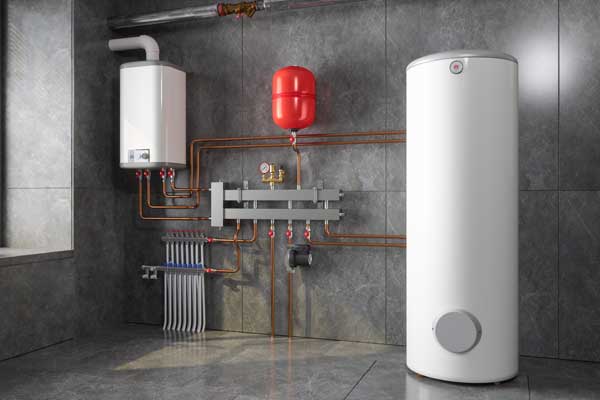How to Maintain Your Home's Hot Water System Functioning Well
How to Maintain Your Home's Hot Water System Functioning Well
Blog Article
Just how do you really feel on the subject of Tips For Maintaining Your Hot Water Heater?

Warm water is important for daily comfort, whether it's for a rejuvenating shower or cleaning meals. To guarantee your hot water system runs effectively and lasts much longer, normal maintenance is crucial. This article provides practical suggestions and insights on how to maintain your home's warm water system to stay clear of disruptions and expensive fixings.
Introduction
Preserving your home's warm water system could seem complicated, yet with a few basic actions, you can guarantee it runs efficiently for several years to come. This guide covers everything from understanding your warm water system to do it yourself upkeep pointers and recognizing when to call specialist aid.
Value of Preserving Your Hot Water System
Routine upkeep not just prolongs the life-span of your warm water system but likewise guarantees it runs successfully. Ignoring upkeep can bring about decreased efficiency, higher energy bills, and even premature failure of the system.
Indications Your Hot Water System Requirements Maintenance
Understanding when your warm water system requires focus can protect against significant concerns. Keep an eye out for indicators such as irregular water temperature level, weird sounds from the heating system, or corroded water.
Recognizing Your Warm Water System
Prior to diving right into maintenance tasks, it's valuable to comprehend the fundamental components of your hot water system. Typically, this includes the water heater itself, pipelines, anode poles, and temperature level controls.
Regular Monthly Maintenance Tasks
Regular monthly checks can help capture small problems before they escalate.
Flushing the Hot Water Heater
Purging your hot water heater eliminates sediment buildup, boosting performance and extending its life.
Checking and Replacing Anode Rods
Anode rods avoid corrosion inside the container. Evaluating and replacing them when broken is critical.
Checking and Changing Temperature Setups
Changing the temperature settings ensures optimum efficiency and security.
DIY Tips for Upkeep
You can carry out several upkeep tasks yourself to maintain your warm water system in top condition.
Looking for Leaks
Regularly evaluate pipes and connections for leakages, as these can lead to water damages and higher costs.
Checking Pressure Alleviation Valves
Evaluating the stress safety valve guarantees it works correctly and stops excessive stress buildup.
Shielding Pipes
Shielding hot water pipelines reduces warm loss and can save energy.
When to Call a Specialist
While DIY upkeep is advantageous, some issues call for expert knowledge.
Complex Concerns Needing Specialist Assistance
Examples consist of major leakages, electric problems, or if your hot water heater is regularly underperforming.
Routine Specialist Maintenance Conveniences
Professional upkeep can include detailed assessments, tune-ups, and ensuring conformity with safety criteria.
Conclusion
Normal maintenance of your home's warm water system is important for performance, durability, and price savings. By adhering to these tips and recognizing when to seek expert assistance, you can make certain a dependable supply of warm water without unforeseen disturbances.
How to Maintain an Instant Hot Water Heater
Before tinkering with your hot water heater, make sure that it’s not powered on. You also have to turn off the main circuit breaker and shut off the main gas line to prevent accidents. Also turn off the water valves connected to your unit to prevent water from flowing into and out of the appliance. 2. When you’re done, you have to detach the purge valves’ caps. These look like the letter “T†and are situated on either side of the water valves. Doing so will release any pressure that has accumulated inside the valves while at the same time avoid hot water from shooting out and burning your skin. 3. When the purge valves’ caps are removed, you have to connect your hosing lines to the valves. Your unit should have come with three hoses but if it didn’t, you can purchase these things from any hardware or home repair shops. You can also get them from retail stores that sell water heating systems. Read the user’s manual and follow it to complete this task properly. When the hosing lines are connected, open the purge port’s valves. 4. You should never use harsh chemical cleaners or solutions when cleaning your unit. Make use of white vinegar instead. It should be undiluted and you’ll probably use about 2 gallons. 5. Now flush your water heater. This task should probably take about 40 minutes. We can’t give you specific directions for this because the procedure is carried out depending on the type, model and brand of your heater. With that being said, refer to the user’s manual. 6. When you’re done draining the unit, you have to turn off the purge port valves again. Remove the hosing lines that you earlier installed on each of the water valves. Put the valve caps (purge port) back in their respective places and be very careful so as not to damage the rubber discs that are found inside these caps. 7. Now that everything’s back in place, check your user’s manual again to find out how to reactivate your water heating system. 8. Once it is working, turn one of your hot water faucets on just to let air pass through the heater’s water supply pipes. Leave the tap on until water flows smoothly out of it. https://www.orrplumbing.com/blog/2014/september/how-to-maintain-an-instant-hot-water-heater/

As a person who reads on Water Heater Maintenance Tips You Can't Afford to Forget, I imagined sharing that article was important. Enjoyed our review? Please quickly share it. Help another person find it. I thank you for your readership.
Book Your Installation Report this page